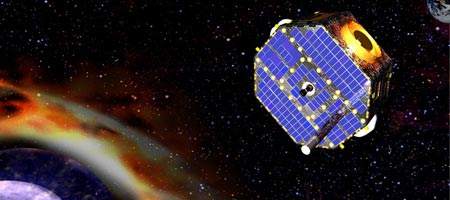NASA has for the first time analyzed the ‘alien matter’ in the interstellar wind.

The Interstellar Boundary Explorer (IBEX) Earth-orbiting spacecraft
has spotted hydrogen, oxygen, neon and helium – the byproducts of older stars – and determined their distribution.
They found 74 oxygen atoms for every 20 neon atoms in the interstellar wind – noticeably different from the proportion of elements in our own solar system, where there are 111 oxygen atoms for every 20 neon atoms.
“Our solar system is different than the space right outside it, suggesting two possibilities,” says David McComas, IBEX principal investigator.
“Either the solar system evolved in a separate, more oxygen-rich part of the galaxy than where we currently reside, or a great deal of critical, life-giving oxygen lies trapped in interstellar dust grains or ices, unable to move freely throughout space.”
While the big bang initially created hydrogen and helium, only the supernovae explosions at the end of a star’s life can spread the heavier elements of oxygen and neon through the galaxy. The new analysis may help scientists understand how our galaxy hasevolved and changed over time.
In particular, the team’s interested in the composition of the boundary region that separates the local interstellar medium from our heliosphere, which shields our solar system from most galactic cosmic radiation.
IBEX measured the interstellar wind traveling more slowly than was found by the Ulysses spacecraft, and from a different direction. The improved measurements show a 20 percent difference in how much pressure the interstellar wind exerts on our heliosphere.
“Measuring the pressure on our heliosphere from the material in the galaxy and from the magnetic fields out there will help determine the size and shape of our solar system as it travels through the galaxy,” says IBEX mission scientist Eric Christian.






